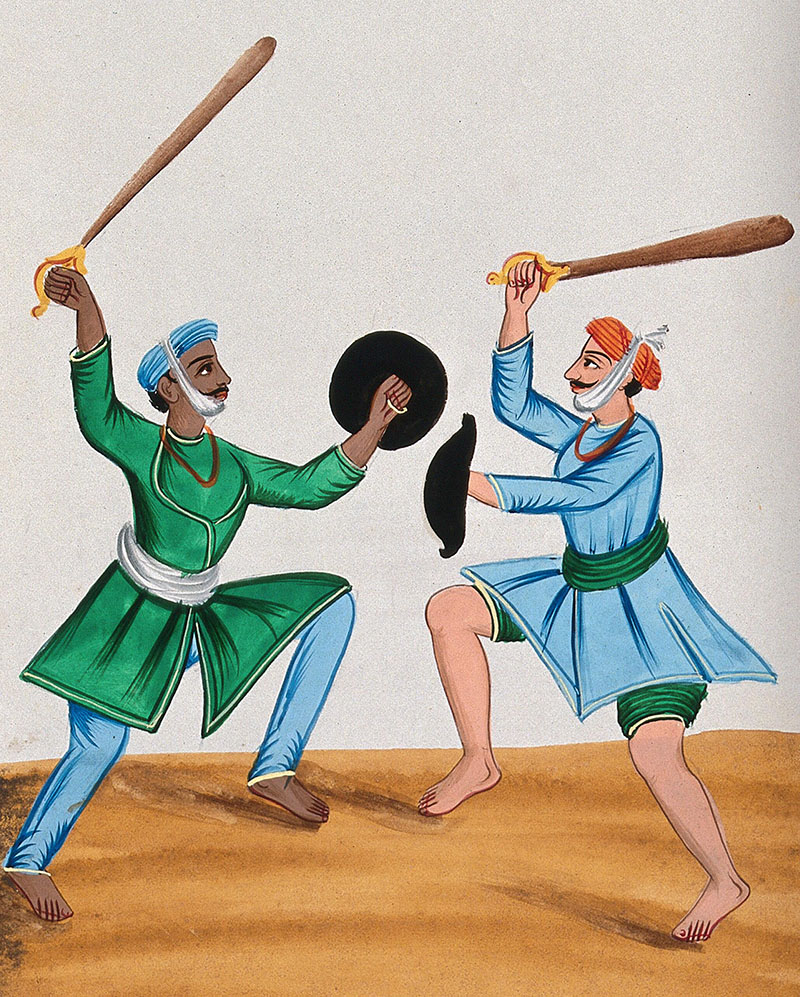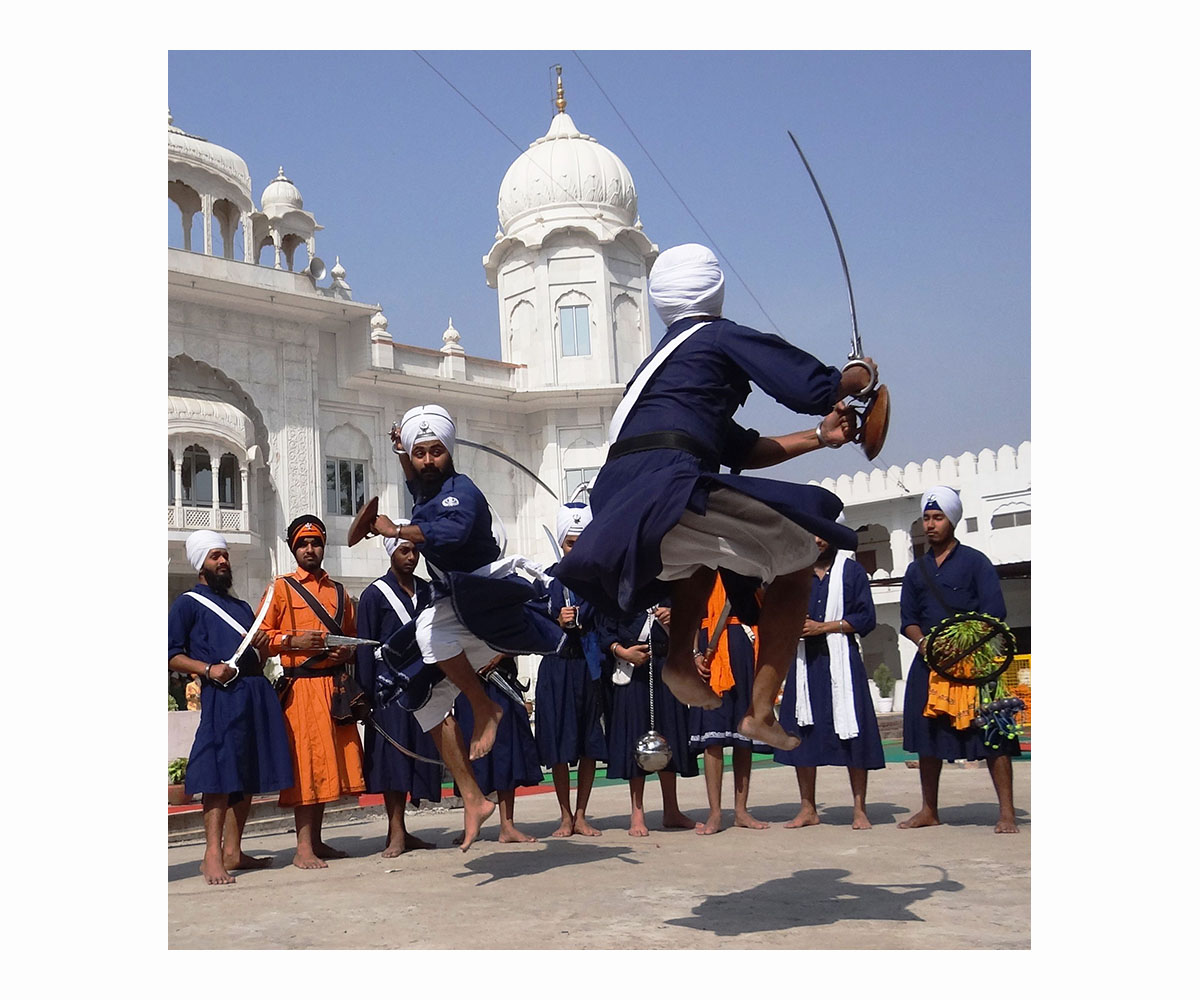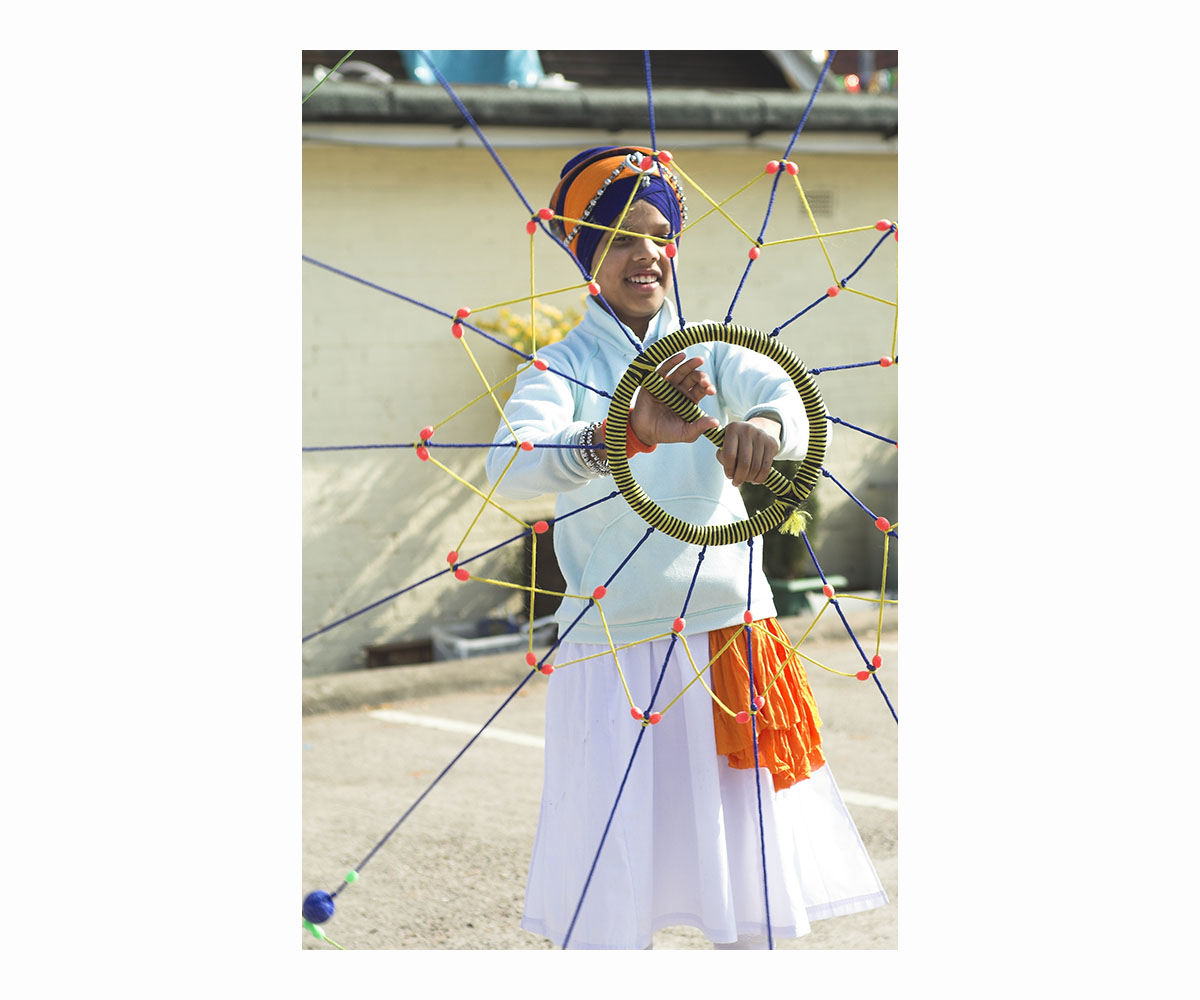ARTICLE
Gatka
The weapons of gatka are often worshipped before combat through a shastra puja, where the weapons require to be arranged in particular formations; a popular one resembles a lotus flower. Following this, the weapons are offered salutations through the shastra namaskar. The Dasam Granth also provides invocations that may be made during training and displays. These are often chanted or performed along with war drums such as the dhol or nagara.
Apart from Punjab, gatka is also practised in parts of Afghanistan, such as the Hazara division of Khyber Pakhtunkhwa as well as by Trinidadians of Indian descent. In the early 2000s the martial art went through a revival through organisations such as Gatka Federation of India (GFI) and National Gatka Association of India (NGAI) and is played as a competitive sport nationally. Additionally, in 2013, the state government of Punjab began offering a diploma course in gatka at the Punjabi University, Patiala.
Bibliography
Our website is currently undergoing maintenance and re-design, due to which we have had to take down some of our bibliographies. While these will be re-published shortly, you can request references for specific articles by writing to hellomapacademy@map-india.org.









